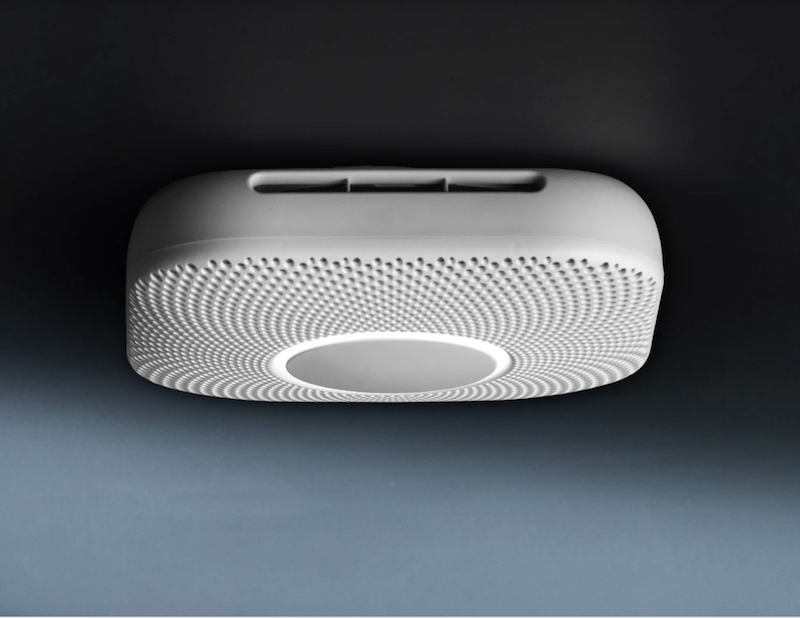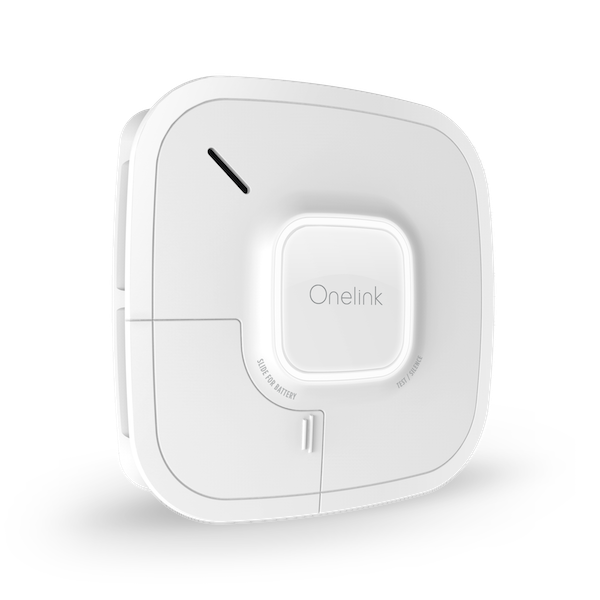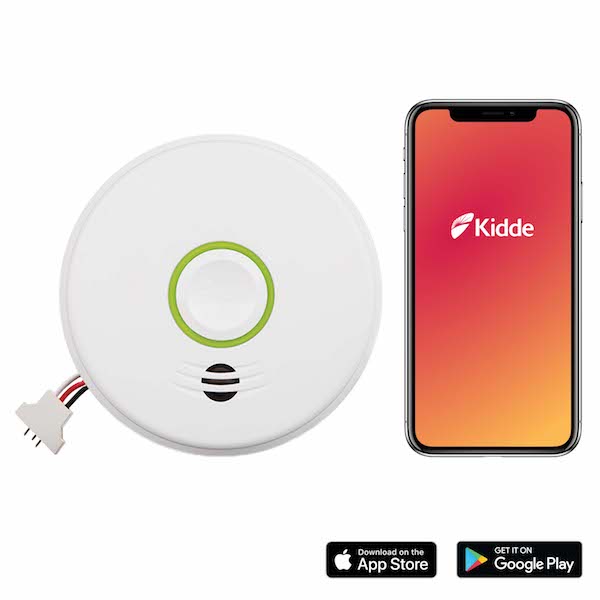Smart smoke alarms and sensors for carbon monoxide are important life safety features in any home.
It has been close to 50 years since smoke alarms were required in homes and, according to the National Fire Protection Association, the risk of dying in reported home structure fires is 55 percent lower in homes with working smoke alarms than in homes with no alarms or none that worked.
Most people think of a smoke alarm as a device that only requires a new battery to be installed each year. However, what most people don’t realize is that smoke alarms in homes should be replaced every 10 years because the sensor wears out over time. With that in mind, I thought it timely to write about the latest generation of smart smoke alarms.
For this article, I chose to only include information on smoke alarms that also include a sensor for carbon monoxide (CO). CO is a colorless and odorless poisonous gas.
According to the Centers for Disease Control and Prevention (CDC), “CO is found in fumes produced any time you burn fuel in cars or trucks, small engines, stoves, lanterns, grills, fireplaces, gas ranges, or furnaces. CO can build up indoors and poison people and animals who breathe it.” Again, according to the CDC, “Each year, more than 400 Americans die from unintentional CO poisoning not linked to fires, more than 20,000 visit the emergency room, and more than 4,000 are hospitalized.”
The Importance of Integration
While smoke and CO alarms are great on their own, there are very important ways that the integration of these alarms into a smart home can do even more to help save lives in the event of a fire, or the buildup of CO in the home. For example:
- Most deaths in a house fire are caused by smoke inhalation, not burns. Turning off a forced air heating or air conditioning system in the event of a fire can minimize the spread of smoke in the home
- At night, turning on lights in the home can make it easier for family members to find their way out, to safety, in the event of an alarm
- Flashing exterior lights can make it easier for first responders to locate the home
- Opening motorized shades/curtains/drapes in the event of a fire can make it easier for family members to exit the home through windows in the event that fire blocks their ability to exit he home through other pathways
- Opening motorized windows and/or turning on a whole-house attic fan can help vent CO that has been detected in the home and replace it with clean air
- Integration with a traditional, monitored alarm system could automatically contact first responders
Smoke and CO alarms are critical devices for alerting a family of an emergency. However, as shown above, integrating these devices with other systems in a smart home can provide added safety for the homeowners. For this reason, I stress the importance of integration in looking at smart smoke and CO alarms.
Nest Protect
The Nest Protect Smart Home and CO Alarm is one of the most full-featured models on the market. Key features include:
- A split-spectrum optical (photoelectric) smoke sensor that can quickly detect both smoldering fires and quick burning fires while minimizing the chance of nuisance alarms
- Multi-function light ring that not only gives visual feedback but also acts as a motion sensing pathway light at night
- Voice alerts after an alarm has sounded tell you the type and location of the emergency
- Wireless linkage between multiple Nest Protect units will cause all devices to sound the alarm when one device senses smoke or CO
- Alarms can be silenced using a smart phone app
- Notifications are sent to your smart phone so you will be aware of a problem when you are away from home
- Automatically tests its sensors and batteries. The light ring will glow green for a short period of time when you turn the lights out at night. This signifies that everything is working properly and you won’t be woken up by a chirping smoke alarm with a low battery
- Scannable QR code on each Nest Protect simplifies setup
- Both battery-operated and hard-wired models are available. The hard-wired model is wired directly to 120 VAC house wiring for power and the internal battery is used as a backup in case there is a power outage.
If a home is based on the Google Nest ecosystem, then the Nest Protect can optionally turn off a Nest thermostat in the event of an emergency. If the smart home is based around products from other manufacturers, then you need to understand the third-party integration capabilities of the Nest Protect.
There is conflicting information online about the ability of the Nest Protect to be integrated with third-party products and services, including IFTTT. I contacted Google support to get a definitive answer. Their response was that the Nest Protect doesn’t integrate with third-party services or products. It does, however, integrate with Google Nest thermostats, Google Nest cameras, and other Nest Protect devices in the home. So, while the Nest Protect has an excellent set of features, the lack of third-party integration capabilities will be a significant downside to the product for many people.
Another downside of the Nest Protect from an integration perspective is that the hardwired version of the product doesn’t use an interconnect wire to link the units. Instead, the units link wirelessly so all of the Nest Protects in a home will go into an alarm state when one unit detects smoke or CO. The integration challenge is that other manufacturers offer inexpensive relay devices that can be wired to this interconnect wire and provide a contact closure output during an alarm condition. Wiring this contact closure output to a traditional alarm system or a smart home processor/hub allows the smoke/CO alarms to be integrated directly with these systems.
Onelink by First Alert Smoke and CO Alarm with Voice Alerts
The Onelink by First Alert Smoke and CO Alarm shares some of the same features as the Nest Protect:
- Utilizes an optical (photoelectric) smoke sensor. This sensor will best detect smoldering fires while minimizing the chance of nuisance alarms
- Multi-function LED light not only gives visual feedback but also acts as a night light (night light is not motion triggered like the Nest Protect)
- Voice alerts after an alarm has sounded tell you the type and location of the emergency
- Linkage between multiple Onelink products will cause all devices to sound the alarm when one device senses smoke or CO
- Alarms can be silenced through the Onelink Home app
- Notifications are sent to your smart phone so you will be aware of a problem when you are away from home
- Scannable QR code on each device simplifies setup
- Both battery-operated and hardwired models are available. The hardwired model is wired directly to 120 VAC house wiring for power and the internal battery is used as a backup in case there is a power outage.
The Onelink by First Alert Smoke and CO Alarm offers two paths for integration with third-party smart home systems. First, the device is compatible with Apple HomeKit. Second, the interconnect cable of the wired version of the Onelink can be used with a compatible relay interface device to integrate the Onelink with a traditional alarm system or a smart home processor/hub. First Alert offers a single relay module that is triggered by either a smoke or CO alarm. This does allow integration with third-party systems, but those systems will not be able to take unique actions based on whether the alarm was due to smoke or CO.
Kidde Smoke and CO Alarm with Smart Features and Voice Alert
The Kidde Smoke and CO Alarm, again, shares many of the same features as the above alarms:
- Utilizes an optical (photoelectric) smoke sensor. This sensor will best detect smoldering fires while minimizing the chance of nuisance alarms
- An LED light provides visual feedback (No night light capability)
- Voice alerts after an alarm has sounded tell you the type of the emergency. The location where the emergency occurred is not annunciated
- Linkage between multiple compatible Kidde products will cause all devices to sound the alarm when one device senses smoke or CO
- Alarms can be silenced using a smart phone app
- Notifications are sent to your smart phone so you will be aware of a problem when you are away from home
- Scannable QR code on each device simplifies setup
- Both battery-operated and hardwired models are available. The hardwired model is wired directly to 120 VAC house wiring for power and the internal battery is used as a backup in case there is a power outage.
The Kidde Smoke and CO alarm offers multiple paths for integration. First, the device is compatible with both Google Assistant and Alexa. Second, the interconnect cable of the wired version of the alarm can be used to integrate the Kidde Smoke and CO alarm with a smart home processor/hub.
Kidde offers two different relay devices that can be connected to the interconnect cable. The first will provide a contact closure when the smoke alarm is triggered and the second will provide a contact closure when the CO alarm is triggered. This allows the smart home to take specific actions depending on the type of alarm that has been triggered.
Summary
All three smoke and CO alarms will provide safety for a home and include optical (photoelectric) sensors for smoke detection (an interesting article on the different types of sensors used in smoke alarms can be found here).
The Nest Protect does provide more advanced smoke detection with its split-spectrum optical (photoelectric) sensor. The Nest Protect also includes additional features, such as a motion-activated pathway light, that add value in the home. However, the Nest Protect scores the worst when it comes to third-party integration. While it can be integrated with a Nest thermostat, it doesn’t integrate wirelessly or through an interconnect cable with any third-party products.
The First Alert and Kidde models can use an interconnect wire with compatible relay devices. The Kidde provides the best options for relays with two models. One can provide a contact closure output when smoke is detected and the other when CO is detected. This allows a smart home processor/hub to take unique actions based on the type of emergency. First Alert only has one relay that will provide a contact closure output when either smoke or CO is detected.
The First Alert and Kidde models also include wireless options for third-party integration. The First Alert includes Apple HomeKit integration while the Kidde can integrate with both Google Assistant and Alexa.
Finally, one feature that both the Nest Protect and First Alert smoke detectors provide, but not the Kidde, is to include the name of the room where the emergency was detected in the voice alert. If you live in a small apartment, or condo, this probably doesn’t matter to you. If you live in a larger home, knowing where the emergency is will be much more important.
Given the above, the choice really comes down to which smart home ecosystem you have, what integration features you want, and whether the inclusion of the room name where the emergency is occurring in the voice alert is important to you.
In the future, when the Matter protocol is adopted by both smoke/CO alarm manufacturers and smart home processors/hubs, integration should become much simpler and be more universally available. Unfortunately, today, that isn’t the case.
Check Out: How Phyn Plus Gen 2 Can Protect a Home from Water Leaks and Monitor Water Usage










